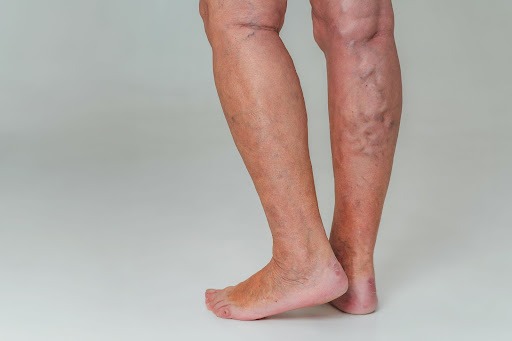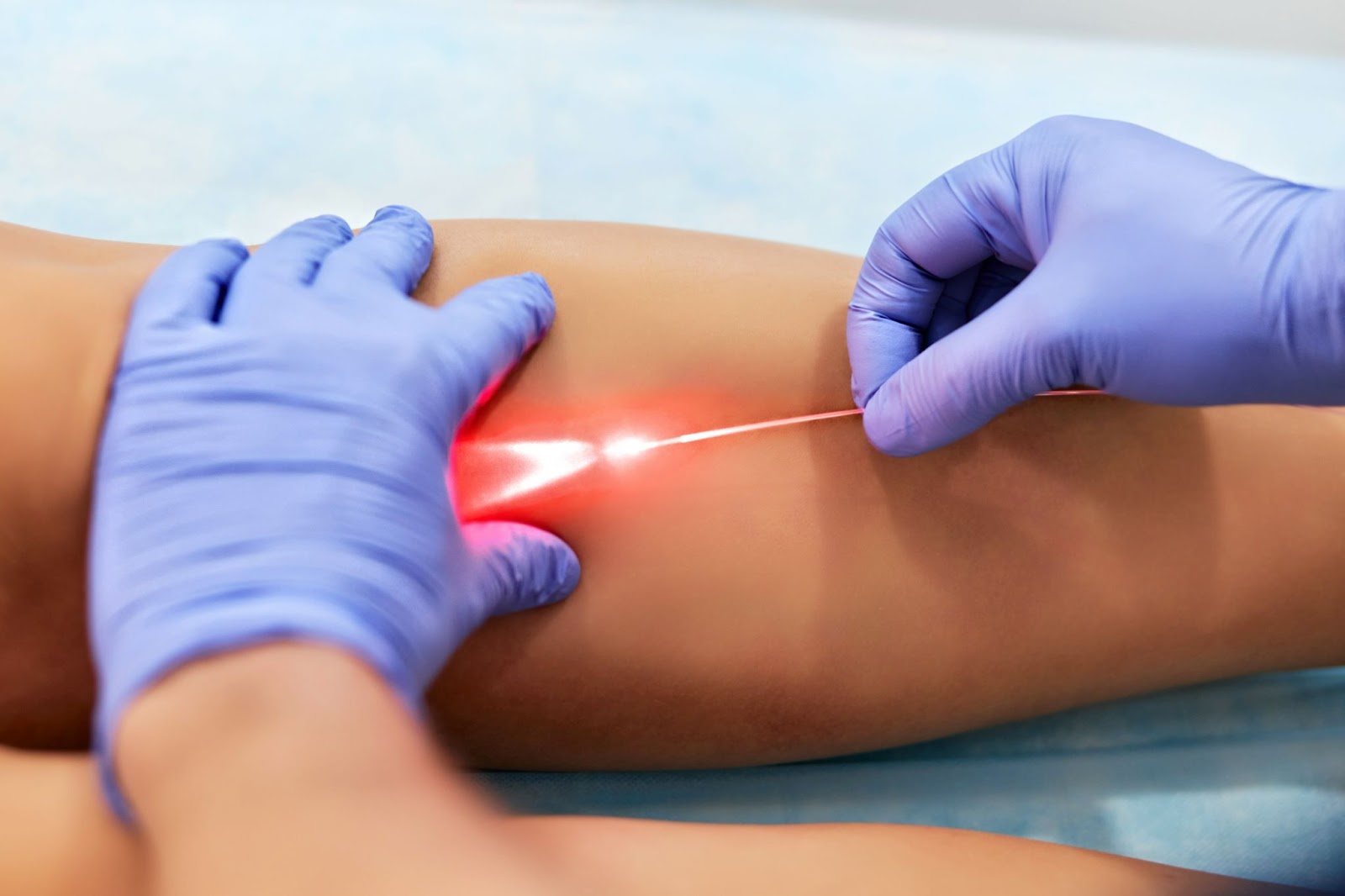Varicose Veins
What Is The Root Cause Of Varicose Veins? – Varicose Vein Causes

by admin
26th September 2023
7 minutes read
Varicose veins are a common condition that affects many individuals, causing twisted, enlarged, and painful veins, primarily in the legs. These unsightly veins not only impact one’s physical appearance but can also lead to discomfort and other health complications. In recent years, laser treatment for varicose veins has gained popularity as an effective solution for addressing this issue. However, before delving into laser treatment, it is crucial to understand the root cause of varicose veins and the factors that contribute to their development.
Introduction to Varicose Veins
Varicose veins are superficial veins that have become enlarged, often appearing dark blue or purple. They are commonly found on the legs, particularly the calves and thighs. These veins have a twisted and gnarled appearance, often resembling cords or bulging ropes.
Under normal circumstances, veins have one-way valves that prevent blood from flowing backward. These valves efficiently direct blood toward the heart. However, in the case of varicose veins, these valves become weakened or damaged, causing blood to pool and flow backward, leading to vein enlargement and twisting.
Primary Causes of Varicose Veins
Various factors contribute to the development of varicose veins. Understanding these primary causes can help individuals take preventive measures and make informed decisions regarding treatment options.
1. Age:
The risk of developing varicose veins increases with age. As people grow older, the valves in their veins may weaken, leading to poor blood circulation and the formation of varicose veins.
2. Family History:
A significant risk factor for varicose veins is a family history of the condition. If one or both parents have had varicose veins, the likelihood of developing them increases substantially.
3. Gender:
Women are more susceptible to varicose veins than men. Hormonal changes during puberty, pregnancy, and menopause can influence vein health. Progesterone, a hormone present in higher levels during pregnancy, can dilate or relax vein walls, contributing to varicose vein formation.
4. Pregnancy:
During pregnancy, the volume of blood in a woman’s body increases to support the growing fetus. This, along with hormonal changes, can put extra pressure on the veins, leading to varicose veins.
5. Obesity:
Excess weight places additional strain on the veins, particularly those in the legs, which can lead to varicose vein development.
6. Prolonged Standing or Sitting:
Occupations or lifestyles that involve prolonged periods of standing or sitting can impede blood flow and increase the risk of developing varicose veins.
7. Lack of Physical Activity:
Regular exercise helps maintain healthy blood circulation. Individuals with sedentary lifestyles may be more prone to varicose veins.
8. Deep Vein Thrombosis (DVT):
A history of deep vein thrombosis, a condition where blood clots form in the deeper veins, can damage vein valves and increase the risk of varicose veins.
9. Injury or Trauma:
Previous injuries to the veins can weaken them, leading to varicose veins over time.
10. Chronic Constipation:
Straining during bowel movements can put pressure on the veins in the abdomen, potentially leading to varicose veins.
11. Medical Conditions:
Certain medical conditions, such as chronic heart valve conditions and chronic liver disease, can increase the risk of varicose veins.
12. Sun Exposure:
Prolonged exposure to the sun can cause the skin to thin and lead to varicose veins.
The Role of Genetics
Genetics plays a significant role in the development of varicose veins. If your parents or grandparents have had varicose veins, there is a higher likelihood that you may develop them as well. Genes can influence vein wall strength and the efficiency of vein valves. Understanding your family history can help you take early precautions and seek timely treatment if necessary.
How Laser Treatment Addresses Varicose Veins

Laser treatment for varicose veins has emerged as a minimally invasive and highly effective method for treating this condition. The procedure involves the use of laser energy to target and close off the affected veins.
During the treatment, a thin laser fiber is inserted into the damaged vein through a small incision. The laser emits heat, which causes the vein to collapse and seal shut. Over time, the body naturally absorbs the closed vein, and blood is rerouted to healthier veins, improving circulation and reducing the appearance of varicose veins.
Laser treatment for varicose veins offers several advantages, including:
Minimally Invasive: The procedure requires only a small incision, reducing the risk of scarring and complications.
High Success Rate: Laser treatment has shown significant success in treating varicose veins, with many patients experiencing long-lasting results.
Quick Recovery: Compared to traditional vein-stripping surgery, the recovery time for laser treatment is much shorter, allowing patients to return to their regular activities sooner.
Local Anesthesia: Laser treatment can be performed under local anesthesia, which is generally safer than general anesthesia.
Outpatient Procedure: Most laser treatments for varicose veins are performed on an outpatient basis, reducing hospitalization and associated costs.
Conclusion
Varicose veins are a prevalent condition that can impact an individual’s quality of life. While laser treatment for varicose veins offers an effective and less invasive solution, understanding the root causes of varicose veins is essential for prevention and early intervention.
Maintaining a healthy lifestyle, regular exercise, and weight management can significantly reduce the risk of developing varicose veins. If you have a family history of varicose veins or are experiencing symptoms, it’s essential to consult with a specialist to determine the best course of action.
Laser treatment for varicose veins in Chennai, Kerala, Hyderabad, and other locations offers a promising option for those seeking relief from varicose veins. By addressing the root causes and exploring modern treatment options like laser therapy, individuals can regain their confidence and enjoy improved vein health for years to come.
How Can Medfin Help?
Medfin is a daycare surgery expert providing access to the latest surgical procedures and top doctors in your city at affordable prices. Medfin provides you access to top doctors and surgeons with 10+ years of experience . With Medfin, you can leave your hassles behind and focus on your health. From instant consultations to paperwork assistance, we have got you covered with everything. So why wait? Call us today!
FAQs
1. Can varicose veins be prevented?
While you can’t entirely prevent varicose veins, adopting a healthy lifestyle can reduce the risk and manage symptoms. Regular exercise, maintaining a healthy weight, avoiding prolonged standing or sitting, and elevating your legs can help.
2. What are conservative management options?
Conservative approaches include lifestyle changes such as exercise, weight management, and elevating your legs. Wearing compression stockings can improve blood flow and reduce discomfort.
3. When should I consider medical intervention?
Medical intervention may be necessary if you experience severe symptoms like pain, swelling, or skin changes. If conservative methods don’t alleviate discomfort or if your varicose veins are causing complications, consult a vein specialist.
4. What are the treatment options?
Treatment options include minimally invasive procedures like endovenous laser treatment (EVLT), radiofrequency ablation (RFA), and sclerotherapy. Surgical procedures like vein ligation and stripping are less common due to advancements in minimally invasive techniques.
5. Is treatment covered by insurance?
Insurance coverage varies based on the severity of your condition and your insurance provider. Some treatments for symptomatic varicose veins may be covered if deemed medically necessary.
6. What is the recovery like after treatment?
Minimally invasive treatments often involve minimal downtime. You may be advised to wear compression stockings and avoid vigorous activities for a short period. Your doctor will provide post-treatment instructions tailored to your specific procedure.
CATEGORIES
- ACL Reconstruction
- Anal Fissures
- Anal Fistula
- Appendicitis
- ASK A DOCTOR
- Benign Prostatic Hyperplasia
- Breast Lump Excision
- Cataract
- Circumcision
- Conditions & Diseases
- Cosmetology
- Covid-19
- Cure
- Endocrinology
- ENGLISH VIDEOS
- Eye Care
- Gallstones
- General Surgeries
- Government Schemes
- Gynaecology
- Gynecomastia
- Gynecomastia
- Health
- Health Insurance
- Hernia
- hindi
- Hip Arthoscopy
- Hip Replacement
- Hip Replacement Surgery
- Hydrocele
- Kannada
- Kidney Stones
- Knee Arthroscopic
- Laparoscopic
- LASER
- Latest Treatments
- Lifestyle
- Liposuction
- Medfin Stories
- Medicine
- Nephrology
- Ophthalmology
- Orthopaedic
- Paraphimosis
- Patient Testimonials
- PCL Reconstruction
- Phimosis
- Piles (Hemorrhoids)
- Pilonidal Sinus
- Proctology
- Prostate Artery Embolization
- Rhinoplasty
- Second Opinion
- Total Knee Replacement
- Uncategorised
- Urology
- uterine artery embolization
- Uterine Fibroids
- Varicocele
- Varicose Veins
- Vascular
- VIDEOS






